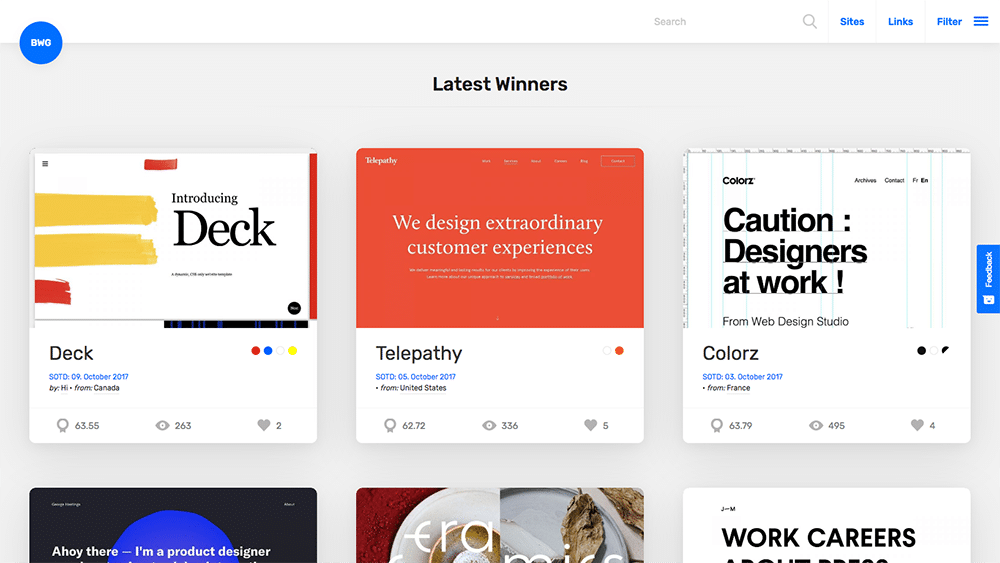Top Trends in Website Layout: What You Need to Know
Minimalism, dark mode, and mobile-first strategies are amongst the key motifs shaping modern-day design, each offering special advantages in customer engagement and capability. Additionally, the focus on accessibility and inclusivity highlights the relevance of producing electronic environments that provide to all users.
Minimalist Layout Appearances
Over the last few years, minimal design aesthetic appeals have actually emerged as a leading fad in website design, highlighting simpleness and functionality. This technique focuses on important material and removes unnecessary aspects, consequently boosting user experience. By concentrating on tidy lines, enough white space, and a restricted shade scheme, minimalist designs assist in less complicated navigation and quicker load times, which are important in preserving customers' attention.
The efficiency of minimal layout depends on its ability to communicate messages plainly and directly. This clearness cultivates an user-friendly user interface, enabling individuals to achieve their goals with very little disturbance. Typography plays a significant function in minimalist layout, as the choice of font can evoke particular emotions and direct the user's journey through the content. The tactical use of visuals, such as high-quality images or refined computer animations, can improve user engagement without frustrating the total aesthetic.
As electronic areas remain to progress, the minimalist layout principle remains pertinent, accommodating a varied audience. Organizations adopting this trend are commonly perceived as modern-day and user-centric, which can substantially influence brand perception in a significantly open market. Inevitably, minimalist style appearances provide an effective service for reliable and appealing website experiences.
Dark Setting Appeal
Embracing an expanding pattern amongst users, dark setting has actually acquired significant appeal in website style and application user interfaces. This style technique includes a mostly dark shade scheme, which not just improves visual allure however additionally lowers eye stress, specifically in low-light environments. Individuals significantly appreciate the comfort that dark setting gives, resulting in longer engagement times and an even more enjoyable browsing experience.
The adoption of dark mode is additionally driven by its regarded benefits for battery life on OLED screens, where dark pixels consume less power. This functional benefit, combined with the stylish, contemporary look that dark styles give, has actually led many developers to integrate dark setting alternatives right into their projects.
Furthermore, dark mode can produce a sense of depth and focus, drawing interest to crucial elements of an internet site or application. web design company singapore. As a result, brand names leveraging dark setting can enhance user interaction and create a distinct identification in a crowded marketplace. With the trend remaining to rise, incorporating dark setting into website design is becoming not just a preference but a common assumption amongst customers, making it vital for designers and developers alike to consider this element in their jobs
Interactive and Immersive Elements
Frequently, developers are including interactive and immersive components right into web sites to improve individual interaction and produce memorable experiences. This trend responds to the increasing assumption from customers for more dynamic and individualized interactions. By leveraging attributes such as computer animations, video clips, and 3D graphics, web sites anonymous can draw users in, cultivating a much deeper link with the content.
Interactive elements, such as tests, polls, and gamified experiences, urge site visitors to actively get involved instead of passively consume info. This engagement not just keeps users on the website longer yet likewise increases the chance of conversions. Furthermore, immersive technologies like digital truth (VIRTUAL REALITY) and enhanced reality (AR) supply distinct possibilities for services to showcase product or services in a much more compelling way.
The incorporation of micro-interactions-- little, refined computer animations that react to individual activities-- additionally plays an important duty in improving usability. These interactions supply responses, enhance navigation, and produce a feeling of contentment upon completion of tasks. As the digital landscape from this source remains to progress, making use of interactive and immersive components will remain a considerable focus for designers intending to produce interesting and Get the facts effective online experiences.
Mobile-First Approach
As the prevalence of mobile gadgets proceeds to surge, embracing a mobile-first technique has actually come to be essential for web developers intending to maximize customer experience. This approach stresses making for mobile phones before scaling up to bigger displays, ensuring that the core performance and web content come on one of the most generally made use of system.
Among the primary benefits of a mobile-first strategy is boosted performance. By concentrating on mobile style, sites are streamlined, reducing lots times and boosting navigation. This is particularly vital as individuals expect rapid and receptive experiences on their smartphones and tablet computers.

Ease Of Access and Inclusivity
In today's digital landscape, making sure that web sites are available and inclusive is not simply a finest practice but a basic demand for reaching a varied audience. As the net proceeds to function as a key methods of communication and business, it is necessary to identify the varied demands of individuals, including those with handicaps.
To accomplish real availability, web developers need to abide by developed guidelines, such as the Internet Content Availability Guidelines (WCAG) These standards emphasize the relevance of offering message options for non-text content, making sure key-board navigability, and maintaining a rational web content structure. Furthermore, inclusive layout methods expand beyond compliance; they entail creating a customer experience that accommodates different capacities and choices.
Including functions such as flexible text sizes, color comparison alternatives, and screen visitor compatibility not just enhances functionality for people with disabilities however additionally enriches the experience for all users. Eventually, focusing on ease of access and inclusivity fosters a much more fair digital environment, motivating more comprehensive participation and interaction. As organizations increasingly acknowledge the moral and financial imperatives of inclusivity, incorporating these concepts into website design will certainly come to be an important facet of successful online techniques.
Final Thought
